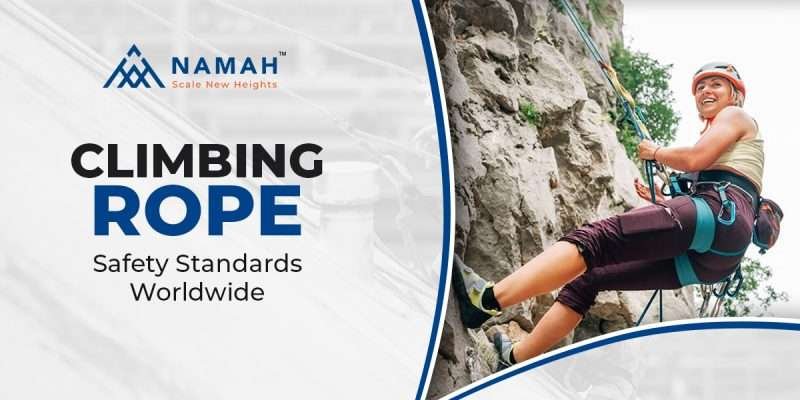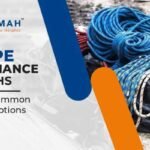Climbing, a sport that’s as thrilling as it is demanding, depends heavily on the reliability of gear, and at the core of that reliability is the climbing rope. Climbers place immense trust in their ropes as they scale rocky faces, making rope safety standards a vital aspect of the sport. What may surprise many is that these safety standards vary significantly from one country to another. This exploration will delve into climbing rope safety standards, comparing and contrasting the approaches taken across different countries and regions.
The Importance of Climbing Rope Safety Standards
Before diving into these standards’ specifics, let’s understand why they’re so crucial. Climbing ropes serve as lifelines for climbers, bearing their entire body weight and mitigating the force of falls. When used correctly, ropes are incredibly strong and reliable—however, the risk skyrockets when subpar or poorly maintained ropes are introduced into the equation. Hence, international safety standards have been established to ensure that climbing ropes meet stringent strength, durability, and safety criteria.
UIAA: The Global Standard Setter
The International Climbing and Mountaineering Federation (UIAA) has played a pivotal role in setting and maintaining international climbing rope safety standards. These standards encompass various aspects, including rope materials, strength ratings, and safety tests. Climbing ropes that meet UIAA standards bear the organization’s certification, a mark of quality and safety recognized worldwide.
United States Standards
In the United States, the American Alpine Club (AAC) and the Climbing Business Journal (CBJ) have worked closely with industry experts to develop safety standards that complement UIAA guidelines. Climbing ropes manufactured and sold in the United States must adhere to these standards. The primary focus is on ensuring that ropes can withstand the rigorous demands of both indoor and outdoor climbing.
European Norms (CE Certification)
Europe, home to some of the world’s most renowned climbing destinations, follows a unique approach. The CE certification, a mandatory conformity mark for products sold in the European Economic Area, is commonly used to assess climbing ropes. CE-certified ropes must meet stringent safety and environmental requirements, ensuring they are safe for climbers and the environment.
Japanese Standards
Japan, a country with a strong climbing culture, has its own standards defined by the Japan Mountaineering and Sport Climbing Association (JMSCA). These standards align closely with UIAA guidelines but also incorporate Japanese-specific testing and certification processes to ensure safety in the local climbing community.
Regional Variations
While UIAA standards provide a solid foundation for safety worldwide, regional variations still exist. These variations often stem from unique climbing conditions, local climbing traditions, or the prevalence of specific climbing styles. For example, alpine climbing in the Swiss Alps may require different rope characteristics than desert climbing in the American Southwest.
The Role of Manufacturers
Manufacturers play a pivotal role in ensuring climbing ropes meet the standards set by their respective countries or regions. They conduct rigorous testing on their ropes to ensure compliance, and they label their products accordingly, making it easier for consumers to identify ropes that meet the required safety standards.
Climbing rope safety standards are paramount for the safety and well-being of climbers worldwide. While the UIAA provides a global benchmark, each country and region adds its unique flavour to these standards, addressing local needs and conditions.
Climbers must be aware of these variations and trust the certifications provided by reputable manufacturers. Ultimately, this combination of international standards and local expertise keeps climbers safe as they pursue their passion for reaching new heights.
Climbing Rope Safety Standards Worldwide: Evolving with Technology
In the first part of our exploration, we discussed the importance of climbing rope safety standards and the variations across different countries and regions. In part two, we’ll delve deeper into how these standards have evolved with advancements in technology and materials.
The Influence of Technological Advancements
Over the years, climbing gear manufacturers have harnessed technological advancements to create ropes that are safer, more versatile, and lightweight. These innovations have pushed safety standard organizations to adapt and update their criteria to reflect the changing landscape of climbing gear.
UIAA’s Ongoing Efforts
The UIAA has been at the forefront of these efforts. They continuously revise their safety standards to incorporate the latest materials and technologies. For example, introducing dry treatment and twin ropes prompted the UIAA to develop specific safety standards for these rope types.
Dry Treatment and Its Impact on Standards
Dry treatment is a technology that involves coating climbing ropes to make them more resistant to water absorption. This is particularly important for alpine and ice climbing, where wet ropes can freeze, become heavy, and lose strength. Safety standards now include specific tests for dry-treated ropes to ensure they maintain their integrity in wet conditions.
Twin Ropes and Double Rope Standards
Twin ropes, a system where climbers use two ropes as a pair, have become famous for their versatility. UIAA standards now address the unique requirements of twin ropes, ensuring they meet safety criteria when used in pairs. These standards guide rope compatibility, use, and inspection.
Introduction of Unconventional Materials
Advancements in materials science have led to the introduction of unconventional climbing rope materials, such as Dyneema and Vectran. These materials offer remarkable strength-to-weight ratios, making ropes lighter and more manageable. However, their unique properties prompted safety standard organizations to develop specific guidelines for their testing and certification.
The Role of Manufacturers and Certification
Manufacturers are responsible for conducting rigorous testing on ropes made from unconventional materials. They collaborate with safety standard organizations to ensure their products meet the required criteria. Climbers can identify ropes that meet these standards through certifications provided by manufacturers.
Looking Ahead
As climbing technology advances, climbing rope safety standards will evolve further. New materials, innovative construction methods, and changing climbing styles will influence how these standards are developed and implemented. Climbers must stay informed about these changes to make informed decisions about their gear.
Climbing rope safety standards are not static; they are dynamic and responsive to the ever-changing landscape of climbing gear technology. Climbers can trust that safety standard organizations like the UIAA are committed to their safety and continuously work to ensure that climbing ropes meet the highest safety criteria.




